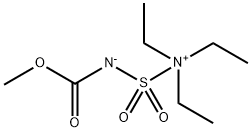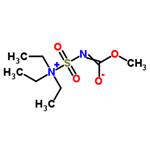slightly yellow crystalline powder
The Burgess reagent has been introduced in 1968 and shown shortly afterwards to act as a mild and selective dehydrating reagent. Next to its importance in the construction of olefins from secondary and tertiary alcohols, the Burgess reagent was also utilized to promote several other transformations of great synthetic values in medicinal chemistry.
Burgess reagent is a selective dehydrating reagent used in organic synthesis. It is used to convert secondary and tertiary alcohol, with an adjacent proton, into alkenes. Burgess reagent is also utilized to promote great synthetic values in medicinal chemistry. It has been used in dehydration of primary amides, formamides and primary nitroalkanes to generate nitriles, isocyanides and nitrile oxides respectively. It forms urethanes when it reacts with primary alcohols.
Reagent for dehydration of secondary and tertiary alcohols; source of heteroatoms (N, O, S) in organic synthesis.
Methoxycarbonylsulfamoyl]triethylammonium hydroxide, inner salt is easily prepared in two simple steps from chlorosulfonyl isocyanate as shown in the following scheme. The white crystalline solid Burgess reagent (m.p : 71-72°C from toluene) is air and moisture sensitive and, as such, needs to be stored in the cold and under an inert atmosphere.





